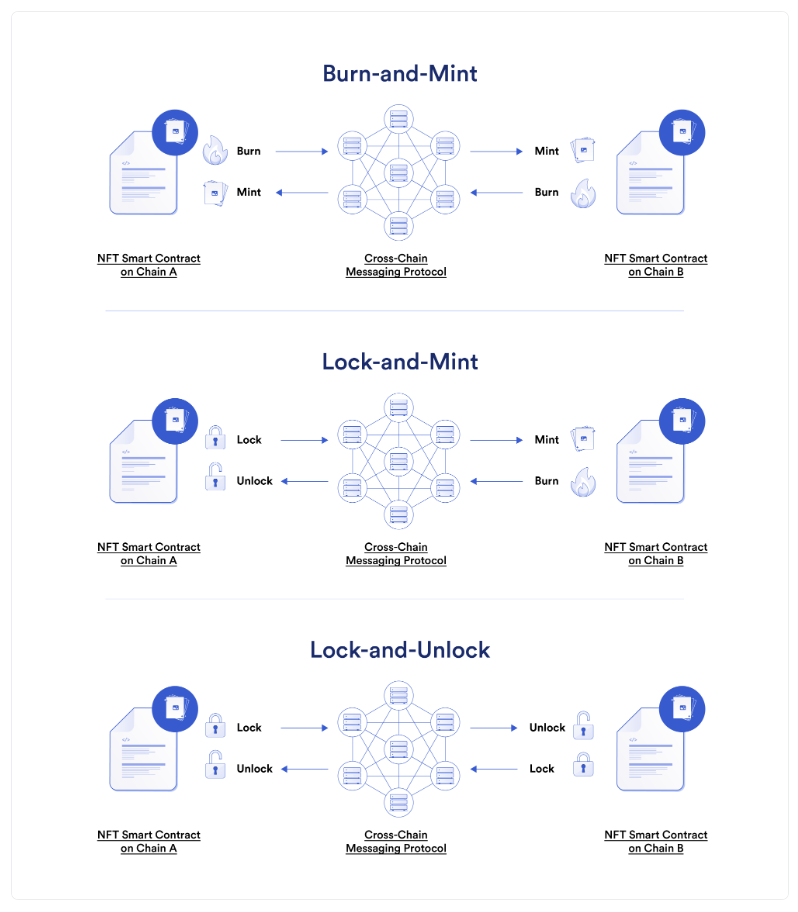What is a cross-chain NFT?
The definition of cross-chain NFT comes from 2 distinct concepts:
- Cross-chain (or cross-chain) is a solution to help transfer crypto assets, tokens or data from one blockchain to another, in order to optimize the ability to combine between blockchains. They work by locking assets on the original chain and unlocking them into smart contracts connected on the new blockchain (e.g. ETH-wETH or BTC-wBTC). The entire process is governed by a mechanism called “wrapped assets” encapsulated in smart contracts.
- NFTs (or non-fungible tokens) as you know, are digital tokens on the blockchain that have a unique identifier that differs from any other token on the chain. An NFT is always executed by a smart contract, and a smart contract always exists on a single blockchain.
Therefore, the NFTs that exist today are always intrinsically linked to a specific blockchain. They cannot be interacted with by users on another blockchain unless they switch to a blockchain containing that NFT. Cross-chain NFT was born to solve this problem.
Summarizing this concept, we can understand that when an NFT moves from one blockchain to another, it becomes a cross-chain NFT.
Cross-chain NFT Features
- Smart Contracts: Cross-chain NFTs are not unique. This means that when moving to another cross-chain the NFT has lost the identity associated with the original blockchain it was born on, instead they will have an entirely new name attached to the new blockchain it moved to. The old smart contract will be considered wiped out (by locking or burning NFTs). This means that any NFT cross-chain deployed requires at least two smart contracts on two blockchains and the interconnection between them.
- Ownership: Once migrated, in theory NFTs are now owned by individual users and not the project or company that implemented the smart contract. It is not technically feasible for a project to unilaterally convert all its issued NFTs, each user must decide for themselves to connect their NFTs from one chain to another. For example, by March 30, 2023, 77% of Y00ts NFTs have been bridged to Polygon, meaning 23% have not yet been bridged and remain on Solana. As for 77% of NFTs moved, according to on-chain data, NFTs are basically generated from user wallets through a cross-chain mechanism, not derived from the project.
How to implement Cross-chain NFT
Cross-chain NFTs can be implemented in three ways:
- Burn-and-mint: NFT owners place their NFT in a smart contract on the source chain and burn it (the effect of removing it from that blockchain by putting it in a permanent wallet that cannot be traded back). Once this is done, an equivalent NFT will be created on the destination blockchain from its respective smart contract, and this process can happen in both directions.
- Lock-and-mint: NFT owners lock their NFTs into a smart contract on the source chain and an equivalent NFT is created on the destination blockchain. When the owner wants to transfer their NFT back, they burn the NFT and it unlocks the NFT on the original blockchain.
- Lock-and-unlock: The same NFT collection minted on multiple blockchains. NFT owners can lock their NFTs on the source blockchain to unlock the equivalent NFT on the destination blockchain. This means that only a single NFT can be used at any given time, even if there are multiple versions of that NFT on blockchains. The most obvious example is Polyhedra’s Pandralia event.

Use cases
NFTs have been used in many ways, cross-chain NFTs emerge and expand use cases from their original meaning beyond their novelty. From DeFi to IP licensing, cross-chain NFTs can significantly improve the potential of traditional NFTs.
Here are the top use cases of cross-chain NFTs:
- Art and collectibles: While traditional NFTs have paved the way for the digital art ecosystem, cross-chain NFTs can expand the market by allowing artists to reach a wider audience and potentially increase the value of their work.Cross-chain NFT wallets and marketplaces also allow collectors to extend their collections on other blockchains without having to process through multiple platforms.
- Decentralized Finance (DeFi):Cross-chain Defi has enormous potential in the future, and cross-chain NFTs are an important part of that. Users can use these NFTs across chains for a variety of uses, including mortgage loans, insurance, and yield farming, freeing up the value of illiquid assets and increasing the overall efficiency of the DeFi market.
- Virtual real estate and in-game assets:The recent development of the Metaverse has sparked interest in virtual real estate (Virtual Land). Cross-chain NFTs will facilitate seamless connection for transactions, virtual real estate ownership, and in-game assets across different platforms and chains. This enhances interoperability between gaming ecosystems, allowing users to transfer their virtual assets from one game to another (depending on the game’s functionality) or even exchange them with players on different platforms.
- Intellectual property rights and licensing: Cross-chain NFTs can be used to represent intellectual property rights, such as copyrights, patents, and trademarks on chains. This enables efficient licensing and transfer of IP rights with transparency on the blockchain without being confined to a single network.
- Tokenized Real-World Assets (IRLs): Cross-chain NFTs can be used to tokenize real-world assets, such as real estate, luxuries, and collectibles, allowing them to be bought, sold, certified, and owned on different blockchains without the need for centralized transaction intermediaries.
- Domain Services: Domainname services make Web3 more accessible with personalized addresses that are easy to remember.One example is the Omnichain naming service (ONS), which makes it easy for users to connect and give their own addresses names for use across multiple blockchains. Minting an ONS name provides an inter-chain NFT, moving along with users to any blockchain, leveraging Web3 utilities.
Cross-chain NFT projects
- Polkadot allows both data and discretionary tokens to be transferred across blockchains. With DOT, we can transfer this data through public, open, permissionless blockchains or even private blockchains.
- Enjin recently launched Efinity’s parachain — a next-generation blockchain for digital assets built on Polkadot. Their goal is to enable creators, developers, and gamers to create metaverse games that are fully interactive across Parachains.
- Wanchain works to create interoperability between chains by developing decentralized bridges that directly connect to multiple blockchains and eliminate the need for third-party exchanges.
- AxelarSea is an NFT cross-chain exchange that allows traders to manage, buy and sell NFTs on all chains.
- The MetaNFT platform allows the simultaneous sale and purchase of NFTs on Ethereum, Polygon, and BSC.
- Also some other practical examples you can study further are Agoran, Moonbeam, etc.
The future of Cross-chain NFTs
The development of cross-chain NFT platforms and applications is a hot topic as it can bring scalability, user-friendliness, and improved on-chain efficiency, along with a plethora of other benefits to the NFT space.
The potential that this technology has is often overlooked due to its speculative nature. But in the future, it will be one of the key elements of the next digital, cultural evolution on Web3. If all goes well, we will soon see noticeable on-chain efficiencies improve, diversify users from chains, increase the number of transactions, expand the NFT use case that makes different blockchain networks act like a dynamic homogeneous network.






